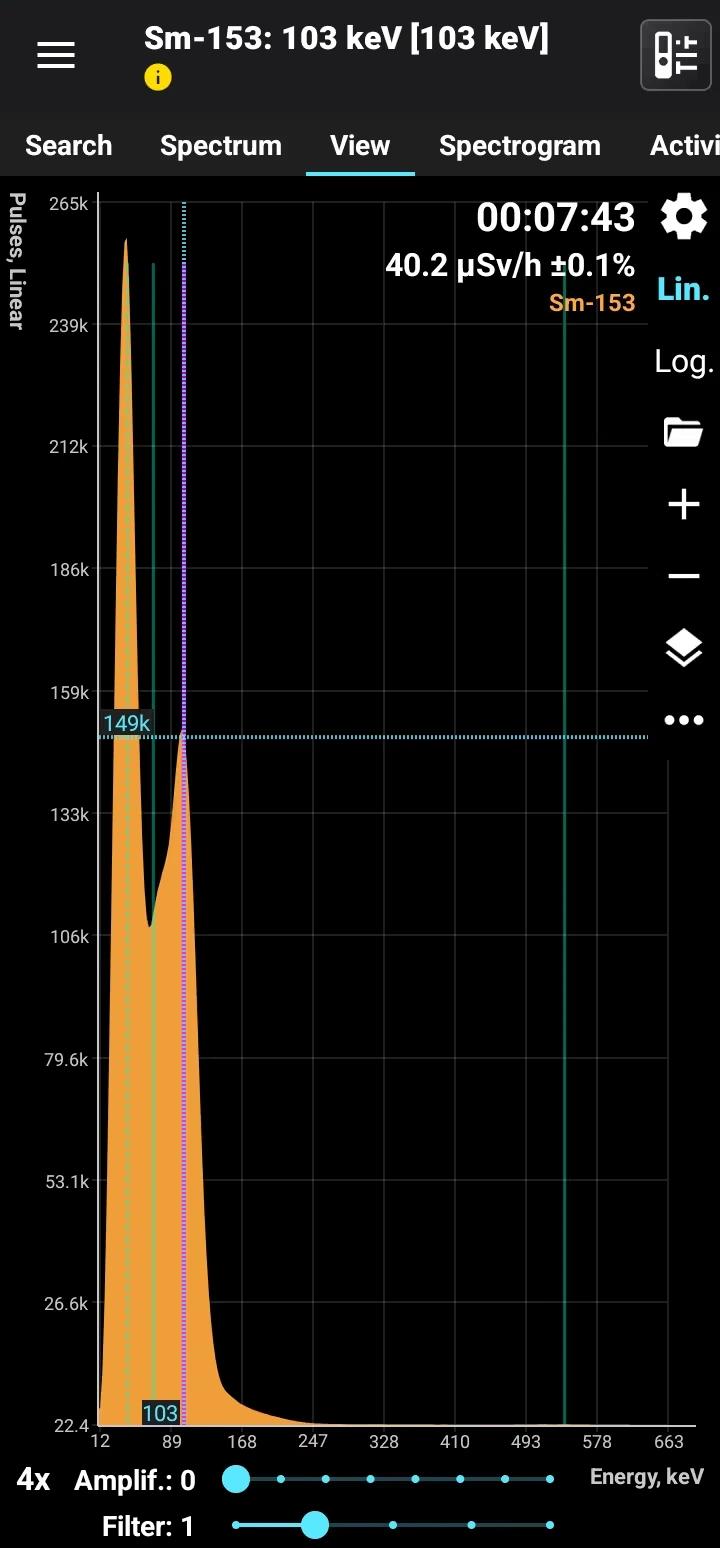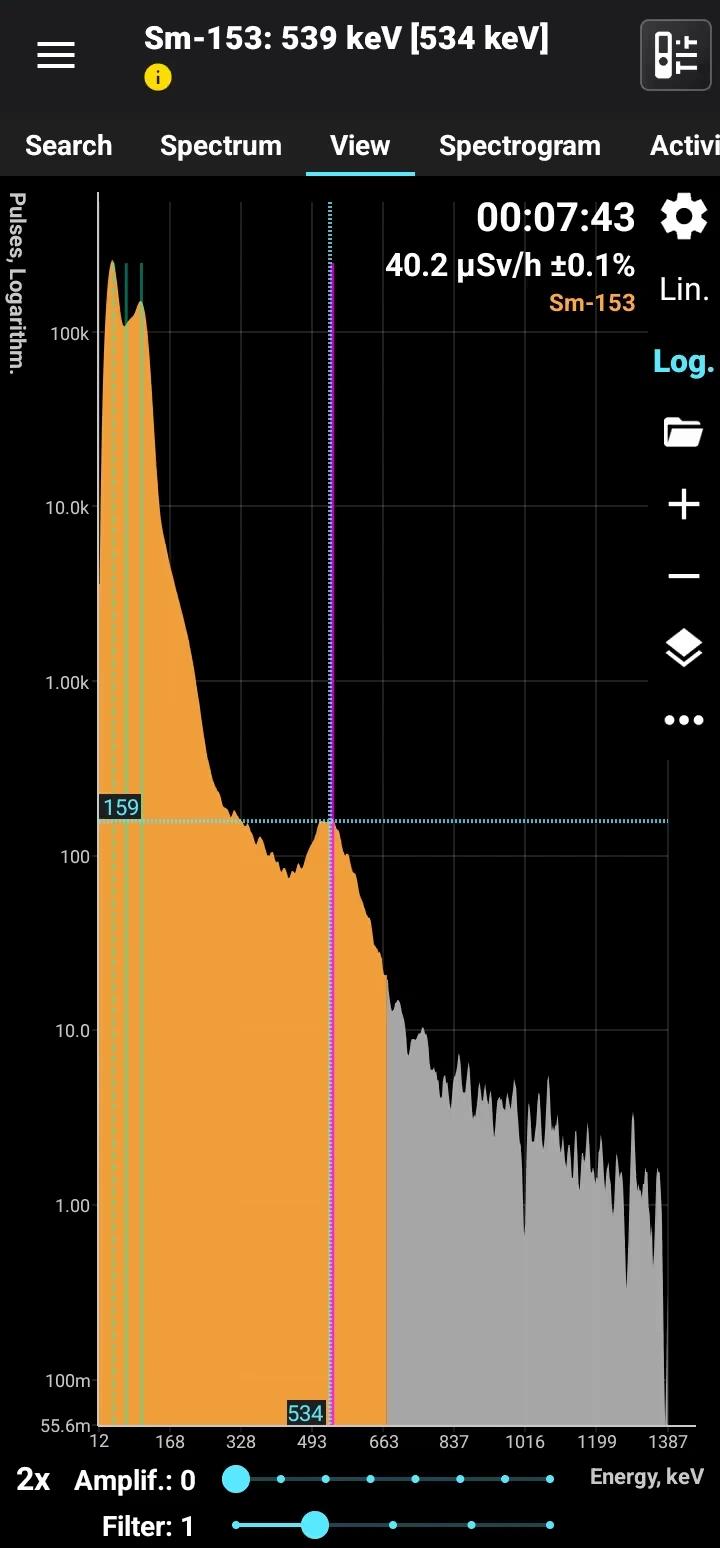
Samarium-153 (Sm-153) is a radioactive isotope of samarium with a half-life of approximately 46.3 hours. It decays by beta emission and emits gamma radiation, which allows for both therapeutic and diagnostic applications. Sm-153 is typically produced artificially in nuclear reactors by neutron activation of stable samarium-152.

Sm-153 is primarily used in nuclear medicine for palliative treatment of pain caused by bone metastases in cancer patients. It is commonly administered as part of the radiopharmaceutical **samarium-153 lexidronam (Quadramet®)**, which selectively targets areas of increased bone turnover associated with metastatic cancer. The beta radiation provides localized therapeutic effects, while the gamma radiation enables imaging to monitor distribution and effectiveness. Sm-153 has also been investigated for potential applications in treating certain types of arthritis and other bone-related conditions.

Sm-153 does not occur naturally and is produced in controlled environments, such as nuclear reactors, through the neutron activation of samarium-152. It is encountered in medical facilities and research laboratories specializing in radiopharmaceuticals and nuclear medicine. Its production and use are strictly regulated to ensure safety for both patients and medical personnel.


Sm-153
Samarium-153
Half-life: 46.3 hours Main emission lines: 41.5, 69, 103, 539 keV
Decay mode Beta-
Beta-
| Avg. En., keV | Intensity, % | Decay En., keV |
| 225.2 | 49.2 | (704.3) |
| 199.5 | 30.4 | (634.6) |
| 264.3 | 19.5 | (807.5) |
| 227.4 | 0.58 | (710.1) |
Gamma
| Energy., keV | Intensity, % |
| 103.18012 | 29.14 |
| 69.67300 | 4.67 |
| 97.43100 | 0.763 |
X-rays
| Energy., keV | Intensity, % |
| 41.541 | 30.0 |
| 40.901 | 16.65 |
| 46.904 - 48.385 | 11.90 |
| 5.176 - 8.030 | 10.7 |
| 46.904 - 47.387 | 9.46 |
| 48.236 - 48.260 | 2.44 |